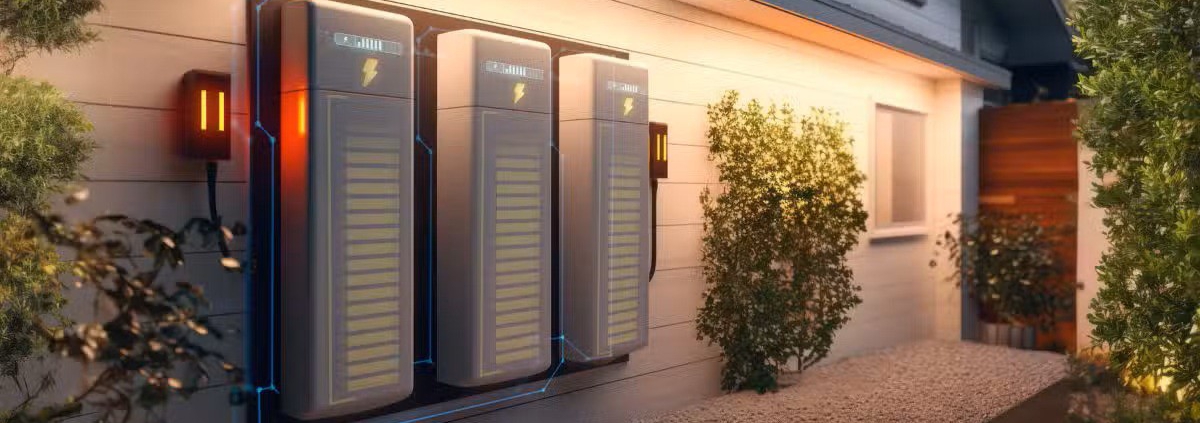Wall-Mounted vs Rack-Mounted Home Energy Storage Systems: Which One Fits Your Needs?
As more homeowners in North America adopt renewable energy and seek energy independence, choosing the right home energy storage system (ESS) is crucial. Among the many options available, wall-mounted and rack-mounted battery systems stand out as two popular installation types — each with distinct advantages tailored to different needs.
This article explores the key differences between wall-mounted and rack-mounted home energy storage, helping you understand which type best suits your household’s energy goals, space constraints, and long-term plans.
Understanding the Basics: What Are Wall-Mounted and Rack-Mounted Systems?
- Wall-Mounted Systems are compact battery units designed to be affixed to a wall — typically in a garage, utility room, or basement. They are integrated, sleek, and optimized for residential environments where space-saving and aesthetics matter.
- Rack-Mounted Systems consist of modular battery units installed vertically or horizontally in racks or cabinets. They offer scalability and flexibility, often favored in setups requiring higher capacity or custom configurations.
- Space and Installation Considerations
Wall-Mounted Systems
- Ideal for limited floor space: These units free up floor area by utilizing vertical wall space.
- Streamlined appearance: Their compact and neat design complements residential interiors without dominating the room.
- Installation location flexibility: Usually mounted at reachable heights in accessible areas like garages or basements.
- Installation simplicity: Easier and faster to install in typical home environments.
Rack-Mounted Systems
- Require dedicated floor space: Typically installed in utility rooms or dedicated energy closets with sufficient room for racks.
- Modular layout: Multiple battery modules can be stacked or arranged in racks, allowing future capacity expansion.
- Professional installation often needed: Due to their size and wiring complexity, specialized technicians are generally recommended.
- Ventilation considerations: Require adequate airflow space around racks to ensure thermal management.
- Scalability and Capacity
Wall-Mounted Systems
- Best for small to medium capacity needs: Perfect for typical single-family homes with moderate daily energy usage.
- Limited expandability: While some models support stacking or adding a second unit, expansion is less flexible than rack-mounted systems.
- Optimized for balanced performance: Pre-engineered battery packs and integrated management systems simplify operation.
Rack-Mounted Systems
- Highly scalable: Easily accommodate growing energy demands by adding battery modules within the rack.
- Suitable for high-capacity applications: Ideal for larger households, homes with electric vehicles, or properties with heavy energy consumption.
- Flexible configuration: Ability to customize battery types and quantities tailored to user needs.
- Maintenance and System Management
Wall-Mounted Systems
- Integrated battery management: Built-in BMS (Battery Management System) provides real-time monitoring, safety controls, and optimized charging cycles.
- Low maintenance: Compact design and sealed enclosures reduce exposure to dust and physical interference.
- User-friendly interfaces: Often paired with smartphone apps or web portals for homeowners to monitor energy usage and system health.
Rack-Mounted Systems
- Modular BMS: Each battery module typically has individual management, requiring integrated system coordination.
- Potentially higher maintenance needs: Larger systems may require periodic checks for connections, ventilation, and module health.
- Advanced monitoring capabilities: Suited for users who prefer detailed control and analytics over their energy system.
- Thermal Management and Safety
Wall-Mounted Systems
- Designed for residential indoor environments: Typically feature passive cooling suited for ambient indoor temperatures.
- Safety certifications: Comply with residential safety standards ensuring safe operation within living spaces.
- Compact sealed units: Minimize risk of leaks or hazards.
Rack-Mounted Systems
- Enhanced cooling options: Larger installations may incorporate active cooling or ventilation systems.
- Physical separation of modules: Helps isolate any issues and simplifies maintenance.
- Typically installed in dedicated rooms: Reduces potential occupant exposure and facilitates system management.
- Cost Factors
Wall-Mounted Systems
- Generally lower upfront costs: Due to integrated design and streamlined installation.
- Cost-effective for average household needs: Avoids paying for excess capacity or complex setups.
- May incur higher upgrade costs: Expansion often requires additional complete units.
Rack-Mounted Systems
- Higher initial investment: Modular components and professional installation increase upfront costs.
- Cost-efficient for scalability: Allows incremental investment aligned with energy needs growth.
- Potential savings over time: Tailored system design can optimize energy use and extend system lifespan.
Which System Should You Choose?
The choice between wall-mounted and rack-mounted home energy storage systems depends on your specific situation:
| Consideration | Wall-Mounted System | Rack-Mounted System |
| Available space | Limited floor space; prefer vertical installation | Dedicated room or larger utility space available |
| Energy needs | Moderate consumption | High consumption or future expansion planned |
| Aesthetic preference | Sleek, unobtrusive design | Less emphasis on aesthetics |
| Budget constraints | Lower initial cost | Willing to invest more upfront for scalability |
| Maintenance willingness | Prefer low-maintenance, plug-and-play | Comfortable with periodic system checks |
| System complexity | Simple, integrated system | Modular, customizable system |
Explore Our Recommended Products
- For a compact, elegant wall-mounted solution, see our Wall-Mounted Home Energy Storage System, designed for easy installation and user-friendly operation.
- For those needing high-capacity, flexible rack-mounted options, check out our Rack-Mounted Home Energy Storage System, perfect for larger homes or evolving energy needs.
Conclusion
Both wall-mounted and rack-mounted home energy storage systems bring unique benefits tailored to different homeowner requirements. Whether you prioritize space-saving design and ease of installation or scalability and customization, understanding these distinctions helps you make an informed decision that fits your home’s energy future.
Choosing the right storage system is a key step toward maximizing your renewable energy investment, enhancing energy resilience, and lowering electricity costs.
If you want more personalized advice or detailed technical information about these systems, feel free to reach out or explore the product pages linked above.


